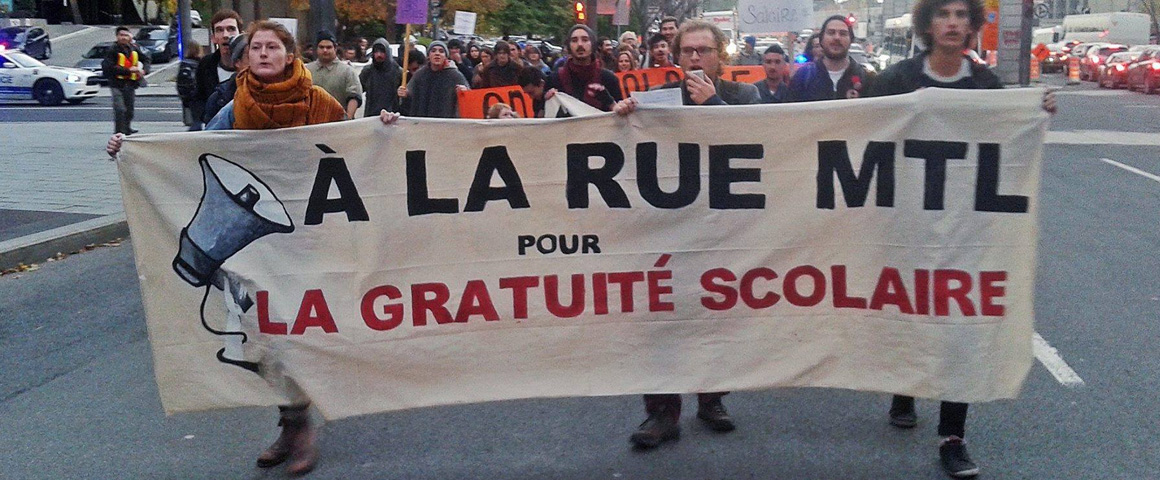“One hundred and fifty years ago in Charlottetown and Québec City, the Fathers of Confederation first dreamed of a united and prosperous Canada.”
Thus proclaims Ottawa’s special website for the anniversary of “the birth of Canada” with the signing of the “British North America Act” in 1867. Unsurprisingly, the statement is replete with nationalist myths.
First, there is no recognition that Canada is actually a state of many nations, founded on the colonial theft of Aboriginal land, including Quebec and the English-speaking nation.
Second, there is no recognition that the cornerstone of the agreement – federalism – was actually made before the 1864 conferences in Charlottetown and Quebec City.
Last, there is no recognition that the agreement, which would facilitate massive capitalist industrialization, was actually finalized under the watchful eye of British Railway capital in London and in the framework of the class questions at that time.
As Marxist historian Stanley Ryerson points out in Unequal Union, the actual “dreams” of the founders about what prosperity and unity meant were neither luminously clear nor unambiguous.
But the statement does get one point correct. The Canadian Constitution was never written by the people, or drafted through any “constituent assembly.” The founders were, indeed, an old boys club who came to Charlottetown with something of an optical illusion worked out, called federalism.
From the start of the road to Charlottetown, within Quebec (then known as Lower Canada) there was strong opposition to both the terms and the procedure towards union. Mass public rallies were held and petitions circulated, demanding popular consultations like a constituent assembly.
The Parti Rouge, arising from the Lower Canada insurrection just thirty years before, had already proposed an alternative arrangement for union: “a Confederation of the two Canadas” based on full recognition of national differences, “giving the largest powers to the local governments and merely a delegated authority to the General Government.”
The question was not simply de-centralization. The Parti Rouge proposal recognized “the French fact.” Upper Canada and Lower Canada represented two communities of economic life with distinct territories, peoples, languages, histories, and cultures – two nations.
While the agreement developed at Charlottetown was called “Confederation” it had nothing else in common with the Parti Rouge proposal for an equal union. The state structure of federalism adopted embodied no such democratic relationship.
Instead, it was and is an unequal union, strongly centralized yet fragile. Quebec exists not as the homeland of a nation but as one of ten provinces. The straightjacket can be untied, but if powers are devolved, they must be granted to all provinces. This hardly a confederation, which is a partnership of sovereign states.
When this confusingly named “Confederation” agreement is celebrated next year, the elephant will still be in the room.
Now the BNA Act is the Canadian Constitution, but Quebec has never signed on. In fact, since patriation of the Constitution, support for the Parti Québécois (PQ) in elections has ranged between about 25 and 50 percent of Quebec voters. In 1995, 49.42 percent supported secession. In the last provincial election, one in three Quebeckers voted for pro-sovereignty parties. Everyone knows these are significant numbers.
The smaller of the pro-sovereignty parties is Quebec Solidaire (QS), which is regularly pilloried among nationalist forces as being “soft on independence,” advocating “vague” and “naive” solutions.
QS emerged about ten years ago, in the context of the anti-globalization movement and the clear adoption by the PQ of a pro-neoliberal agenda. The predecessor of QS, the Union of Progressive Forces, included the Parti Communiste du Quebec (PCQ) and adopted a position of putting emphasis on social and class questions, over the national question.
When the UFP became QS, the new party retained the formulation of a “party of the street” and a “party in the parliament.” In 2009 it adopted the position of supporting independence, but consistently avoided narrow nationalist positions. For example, QS denounced the Charter of Values project as well as proposals to limit access to Anglophone CEGEPs (colleges), and has repeatedly rejected calls for a “united front” of sovereigntists.
QS has also rejected the PQ’s route to independence. Instead, it proposed that Quebec draft its own Constitution through a Constituent Assembly, “an extensive process of participatory democracy,” in the “broadest possible manner” which would determine various political questions as well as the future of Quebec, according to the QS programme.
The result, a new Constitution, would finally be adopted by referendum and, throughout this process, “Québec solidaire will defend its independence option and will promote its values of environmentalism, egalitarianism, feminism, democracy, and pluralism, without presuming the outcome of the discussions.” This is not a gimmick. It reflects the conclusion that the national question belongs to the people, not a party or legislature.
The QS proposal is somewhat similar to that of the Communist Party. Since 1964 the CPC has called for a new Constitution for Canada, written by a Constituent Assembly with equal participation from French and English-speaking Canada, and adopted by a referendum.
The mandate of this process would include guaranteeing sovereignty and self-determination for Quebec, up to and including secession. In 1967 the CPC joined the PCQ in supporting a Constitution for Quebec, to compel such negotiations, as equals, for a new genuine confederal republic. The CPC also insists any new constitutional arrangement guarantee the full participation of Aboriginal peoples and protect and extend their inherent national rights.
Today, Quebec Solidaire is further debating its proposal for a Constituent Assembly. Effectively the discussion is between maintaining QS’s current position of an open mandate, or narrowing the Constituent Assembly to only consider independence (setting the stage for an alliance of sovereigntist forces). The final decision will be made by a Party congress in the last weekend of May.
The PCQ (which is not in favour of independence) has noted that narrowing the mandate would effectively align the project of the new Constitution with the kind of colonialism advocated by the PQ, who refuse to recognize self-determination of indigenous nations who inhabit vast territories within Quebec’s borders.
Similarly, Paul Cliche (a long-time militant in QS and in favour of independence) notes that “the current position of [QS] … tries to exceed the historical cleavages responsible for much of the last two referendum failures,” through democratic discussion, not “handcuffing” the Constituent assembly to independence and turning it into a “masquerade.”
One hundred and forty-nine years ago, the masquerade of Canadian Confederation handcuffed Quebec to federalism. As the left in Quebec debates how best to break those unequal bonds, it would be wise to avoid making new ones. Marx’s comment is still apt: “Any nation that oppresses another, forges its own chains.”


